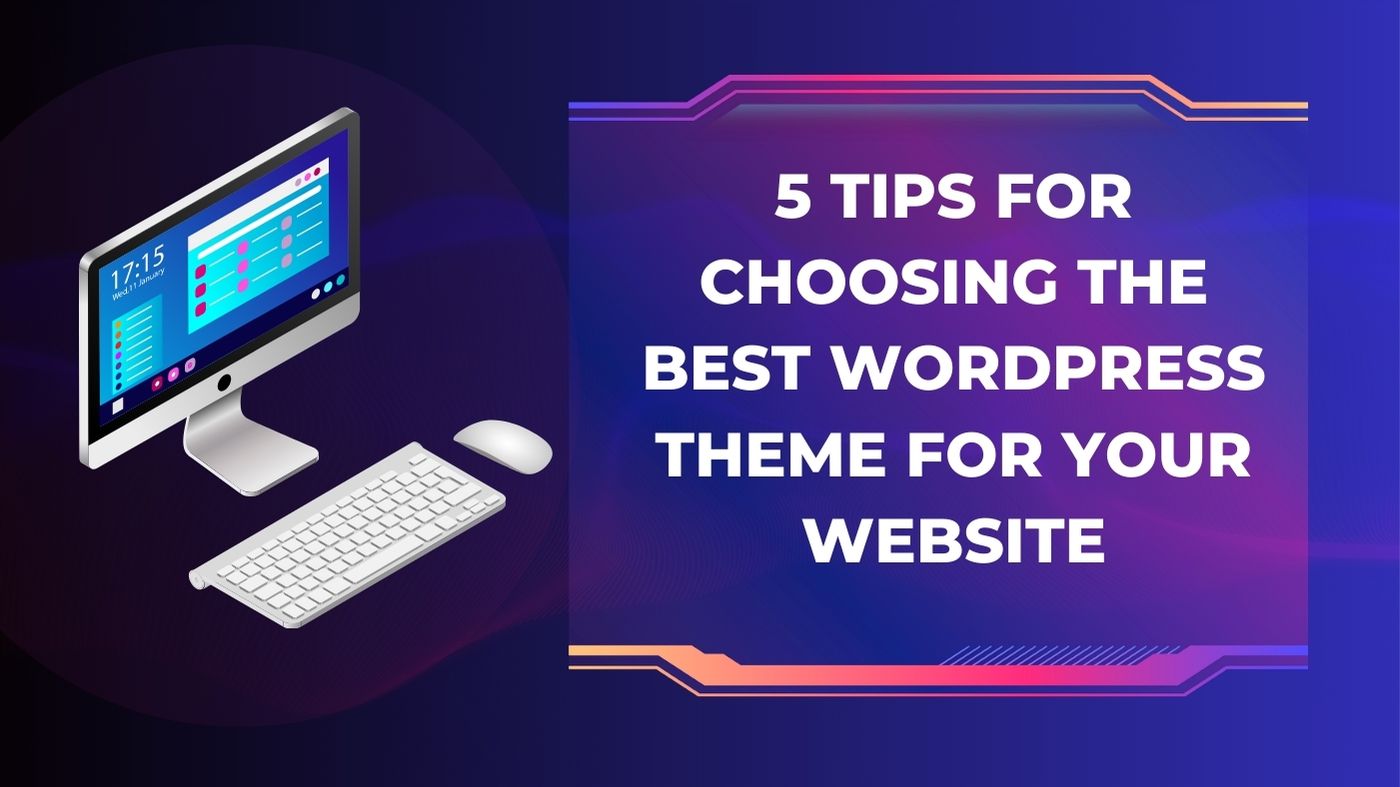Introduction
Selecting the the Best WordPress theme matter to your WordPress website may be a tough undertaking. There are heaps of options available, and it is able to be difficult to realize in which to start. However, there are some key things to keep in mind while selecting a WordPress theme to be able to help make sure you’re making the first-class choice on your website. Here are five tips to help guide your decision:
Determine your website’s goals and target audience
It’s crucial to initially identify your website’s objectives and target audience before selecting a theme. This will assist you in making judgments about the layout, features, and functionality of your website.
Your website’s objectives will determine the kind of functionality and material you should use. For instance, you will need an e-commerce theme with features like product pages and a shopping cart if the purpose of your website is to sell things. A theme with features like a blog and a search tool is required if the main purpose of your website is to deliver information.
Your choice of theme will also be influenced by knowing your target audience. It will assist you in selecting a design that is acceptable for your potential customers and incorporates functional elements. For instance, if older guys make up the majority of your target market, you should pick a theme that is simple to use and includes writing that is large enough to read. If children are your target audience, you should pick a theme that is vibrant and fun.
In conclusion, knowing your website’s objectives and target audience is essential to choosing a WordPress theme wisely. It will assist you in choosing a theme that is suitable for the kind of content and functionality you require and that your audience will find appealing.
Consider the overall design and layout for the best wordpress theme
It’s crucial to take the theme’s overall layout and design into mind when selecting a WordPress theme. The look and feel of your website as a whole, as well as the user experience, can be greatly influenced by the design and layout of a theme.
The visual components of a theme, such as colors, typography, and images, are referred to as its design. An engaging theme that runs throughout the entire website should be well-designed. Additionally, it should coordinate with the overall look and feel of your brand and content.
The presentation of the content on the page is referred to as the theme’s layout. Visitors should have little trouble navigating a well-designed site and finding the information they need. A theme should be responsively designed and optimized for use on all platforms, including desktop and mobile.
The theme’s adaptability and customizability options should also be taken into account. A theme should ideally include a variety of modification options so you may alter the look and layout without knowing how to code.
When it comes to layout, some themes offer a preset structure and layout that may limit your ability to create the website as you choose, while other themes offer a more flexible layout with more possibilities. Additionally, it’s crucial to see if the theme comes with clear instructions on how to use it; otherwise, setting up the website could be difficult.
In conclusion, the entire look and feel of your website as well as the user experience depend greatly on the design and layout of a theme. It’s crucial to take into account the aesthetic components of the website, such as the colors, typography, and images, as well as how the material is organized. Additionally, search for a theme with good documentation, customization possibilities, and a responsive design.
Look for a theme with responsive design
A modern website must have a responsive design in order to appear good and work properly across a variety of devices and screen sizes. In order to adapt the screen size of the device being used to view the website, a responsive theme will change its style and content.
A responsive design is crucial because it guarantees that all visitors to your website, whether they are using a desktop, laptop, tablet, or mobile phone, can effortlessly navigate and access it. As a result, the user experience is enhanced, and engagement and conversion rates may increase.
When looking for a responsive theme, make sure the layout adjusts to the type of device being used to view the website and that it is optimized for various screen sizes. This can be done by examining the theme’s documentation or by seeing the demo of the theme on various devices.
The use of flexible grid and images by the theme must be confirmed in order for the website to be resizable on all devices. The theme shouldn’t employ set width and height values either because they would cause the website to malfunction on smaller screens.
In conclusion, responsive design is essential for a modern website since it guarantees that your website will appear and work properly across a variety of devices and screen sizes, enhancing user experience, increasing accessibility, and possibly even increasing engagement and conversion rates. Look for a theme that has a flexible grid and graphics that are optimized for various screen sizes.
Check the theme’s performance and speed
It’s crucial to consider the theme’s performance and speed while selecting a WordPress theme. A website that loads slowly can have a negative effect on the user experience and result in high bounce rates. This can be prevented by using a theme that is performance-optimized.
To check the performance and speed of a theme, you can run some tests on it such as:
- A page speed test using tools like Google’s PageSpeed Insights or GTmetrix
- A load time test to see how long it takes for the page to fully load on different devices and internet speeds
Additionally, make sure the theme was developed utilizing best practices, such as using a clean, streamlined codebase, reducing the use of plugins and external scripts, and compressing pictures. The speed at which a website loads depends on how few scripts and outside resources are used, as well as how few queries are made to the server.
Additionally, the theme ought to work with plugins for performance improvement and caching. For quicker loading on subsequent visits, caching plugins save a copy of the website on the user’s browser, while performance optimization plugins can minify resources and shrink the size of the page.
Conclusion:
Choosing the right theme for your WordPress website is an important decision that can have a big impact on the overall success of your site. By considering the purpose of your website, looking for a responsive design, checking for compatibility with popular plugins, reading reviews, and testing the theme on a staging site, you can make a well-informed decision that will help ensure your website looks great and functions well. Keep in mind that is always good to keep an eye on the updates of your theme since they can improve the performance of your website as well as security. By following these tips, you can be confident that you have selected the best WordPress theme for your website. Encouragement to take the time to carefully consider your options and choose a theme that is well-suited to your needs and goals.



